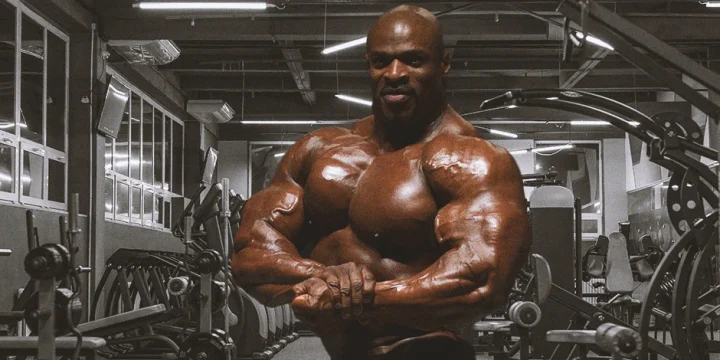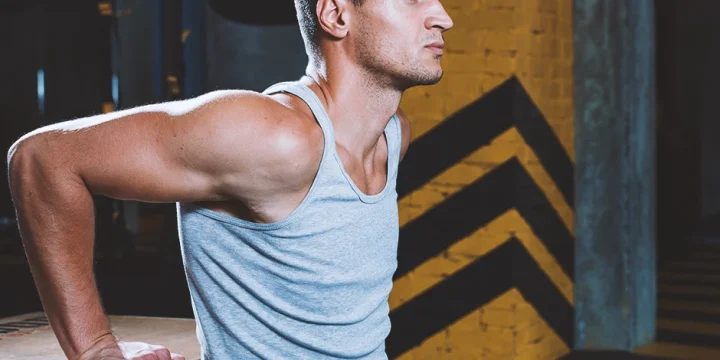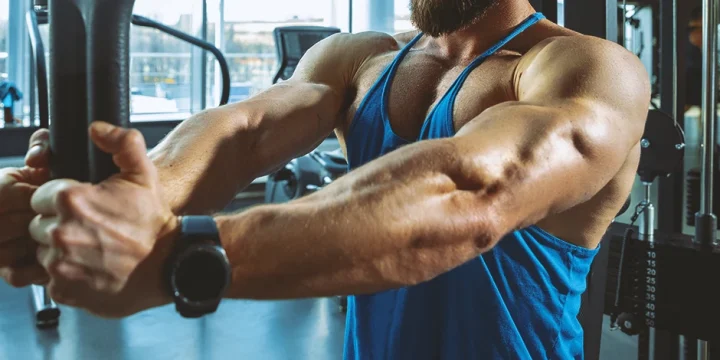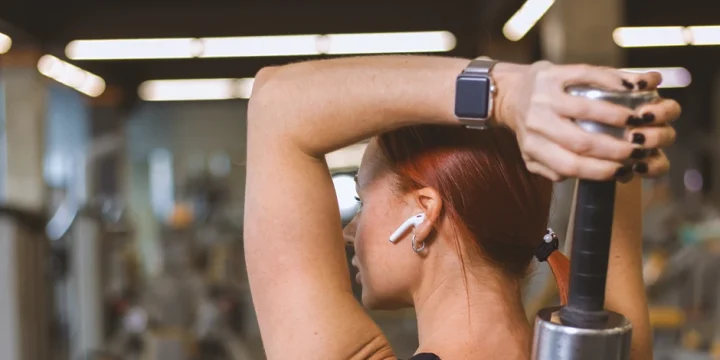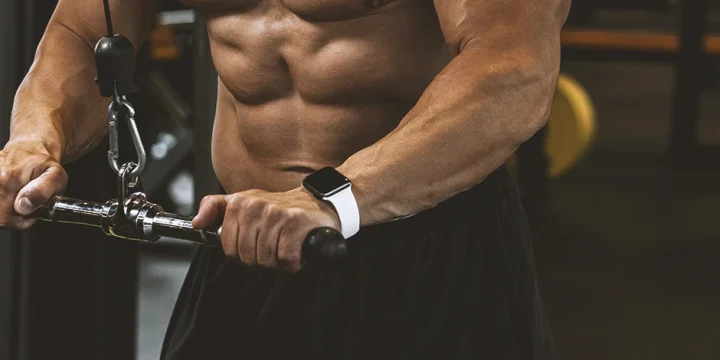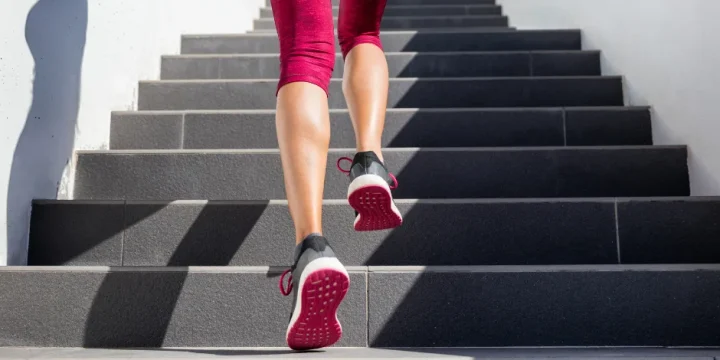The triceps and shoulders are two muscle groups that work together and are extremely difficult to train. They require pushing muscles to do painful exercises that require technique and precise form.
As part of a team of personal trainers, we determined through our tests the ultimate shoulder and triceps workout that even Steven Lopez would like to try.
This article covers insights based on our firsthand experience of getting strong muscles in your upper body.
Quick Summary
- To build mass in your shoulders and triceps, incorporate exercises like bench presses, Arnold presses, lateral raises, tricep pushdowns, and close grip bench presses into your routine.
- The workout emphasizes a combination of compound and isolation exercises to target all parts of the shoulders and triceps effectively.
- A study by the National Center for Biotechnology Information found that inter-repetition rest training led to a 21.5 ± 5.7% increase in maximum strength and a 10.7 ± 10.3% increase in upper body isometric peak force, compared to traditional training's 13.5 ± 7.2% increase in strength.
- Personally, I find that this balanced approach of combining various exercises with proper rest is effective for maximizing muscle growth in the shoulders and triceps.
Shoulder Exercises for Sculpting Broad, Powerful Shoulders

I’ve gathered the best exercises for a shoulder workout according to my experience.
Combine it with a post-workout drink we have tried before, like Transparent Labs or Jacked Factory Growth Surge, and see those muscles grow.
Bench Press
This compound exercise is excellent for targeting your chest muscles and shoulders.
Here’s how to do it:
- Lie down on a bench and grip a barbell with your hands slightly wider than shoulder-width apart.
- Then, lower the barbell towards your chest by bending your elbows, and push it back up by extending your arms.
Arnold Press
This exercise uses all three heads of the deltoid muscles (anterior, medial, and rear deltoids) and your biceps, triceps, and upper back muscles.
Here’s how to do it:
- Hold dumbbells at shoulder height with your palms facing forward. You can also do it on a flat bench.
- Press the weights overhead and bring them back as you lower the weights down.
Lateral Raise
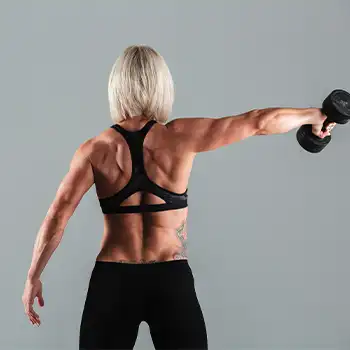
The lateral raise is an effective isolation exercise that targets the medial deltoid muscles in your shoulders, contributing to overall shoulder strength and stability.
To perform it, stand holding dumbbells with palms facing inward, keeping your arms straight as you lift the weights to the sides until your arms are parallel to the ground, and slowly lower them back down.
This exercise requires focus and strict form control.
Related: Cable Lateral Raise 101 Guide
Triceps Workout for Carving Chiseled Arms

The triceps require fewer rest breaks, upper arm control, and exercise variations. Here are a few choices I’ve tried.
Tricep Pushdowns
This exercise can be done with a cable machine or a preferred home gym resistance band.
Here’s how to do it:
- Stand facing the cable machine or anchor the resistance band overhead. Grip the bar or band with an overhand grip and keep your elbows tucked close to your sides.
- Push the bar or band down until your arms are fully extended, and then slowly return to the starting position.
Also Read: How to Do Tricep Pushdowns
Triceps Kickbacks
This exercise targets the triceps by kicking your arm back behind you.
Here’s how to do it:
- Hold a weight firmly in one hand and bend forward slowly at the waist.
- Extend your arm behind you with a slight bend in your elbow while keeping it close to your body, working your triceps.
Close Grip Bench Press
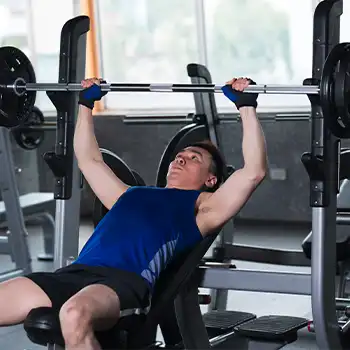
This is a great exercise to train your chest and triceps.
This variation of the traditional bench press involves lying on a bench and gripping the barbell with your hands shoulder-width apart.
Lower the barbell towards your chest and push it back to the starting position. It can effectively train chest muscles while also targeting your triceps.
Workout Structure – Sets, Reps, and Rest Periods
For the actual workout structure, I recommend doing the following:
- 4 sets of 6 reps for Bench Press
- 3 sets of 12 reps for Arnold Press
- 3 sets of 12 reps for Lateral Raises
- 3 sets of 12 reps for Tricep Pushdowns
- 3 sets of 12 reps for Triceps Kickbacks
- 3 sets of 12 reps for Close Grip Bench Press
According to a study from the National Center for Biotechnology Information website, you should take 3-5 minutes of rest between sets to let your muscles recover [1].
Maximizing Shoulders and Triceps Growth

Maximizing shoulder and triceps growth requires multiple activities. Our research indicates progressive overload, a high-protein diet, and pairing shoulders with chest exercises.
Progressive Overload
Progressive overload is a bodybuilding technique that gradually increases the training weight over time.
To apply a progressive killer technique, you have to consider the following:
- Avoid sticking with the same weight for a long time. This can result in a plateau where your body stops responding to the exercise and your shoulders and triceps go haywire.
- Increase the number of repetitions you do per exercise. This will be a major challenge for your muscles and keep your blood flowing.
- Decrease the resting time between sets to challenge your body and improve endurance.
With this advice, you can build stronger, more defined shoulders and triceps. According to the study on the ResearchGate website, you should track your progress and use proper form, technique, and compound movement to avoid injuries [2].
High-Protein Diet

As an expert fitness and bodybuilder, I know that a high-protein diet can significantly impact muscle growth, recovery, and overall health.
Here's a concise example of a high-protein diet that I personally follow and recommend to my clients.
Breakfast:
- 4-egg omelet with spinach and mushrooms (28g protein)
- 1 cup Greek yogurt topped with 1/4 cup almonds (23 grams of protein)
Mid-Morning Snack:
- 2 rice cakes with 2 tablespoons of natural peanut butter (8g protein)
- A protein shake made with 1 scoop of your favorite whey protein, water, and ice (24g protein)
Lunch:
- 6 oz grilled chicken breast with mixed vegetables and 1/2 cup cooked quinoa (40g protein)
Mid-Afternoon Snack:
- 1 oz beef jerky (10g protein)
- 1 cup cottage cheese with 1/2 cup diced pineapple (28g protein)
Dinner:
- 6 oz baked salmon with a side of roasted asparagus and 1/2 cup cooked brown rice (45g protein)
Evening Snack:
- 1 scoop of whey protein with water or unsweetened almond milk (24g protein)
This meal plan offers approximately 210 grams of protein, which can be adjusted depending on your needs and fitness goals.
Shoulders and Chest Make the Best Combination
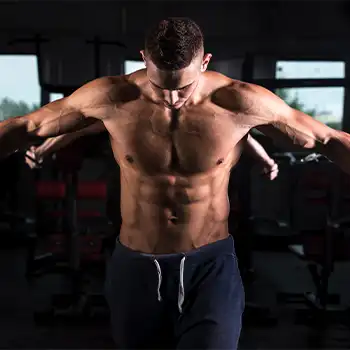
Most shoulder exercises involve the shoulder-chest muscle group.
They require a combination of compound and isolation exercises, focusing on building pressing strength, endurance, and muscle mass.
I recommend trying that on a single workout session to improve overall upper-body strength until you mimic what Lopez employs: a nasty finishing technique called the three-headed giant set.
Related articles:
Tips to Minimize Injury Risk When Training the Upper Body

Upper-body exercises can lead to mild or severe injuries if you're unprepared.
To reduce the chances of lesions, take these precautions and avoid painful setbacks:
- Always warm up: Start with a thorough warm-up that includes stretching and mobility exercises to enhance flexibility and range of motion. This will also increase blood flow to your muscles, enabling them to function better during exercise.
- Jumping rope: This exercise requires coordination and balance, which improves body awareness. When you're more in tune with your body and its movements, you can control your actions and avoid injuries.
- Follow the proper form: Maintaining good posture and alignment during exercise reduces the risk of strain and injury to your neck, back, and shoulders. Ensure you follow the correct instructions for each exercise and seek expert guidance if needed.
“Building strong muscles prevents loading on your joints, makes a huge difference.”
- Dr. Jordan Metzl, Sports Medicine Physician
FAQs
Can You Train Triceps and Shoulders Together?
Yes, you can train the triceps and shoulders together in the same workout. Focus on compound movements and pay attention to workout intensity when training.
Can You Superset Shoulders and Triceps?
Yes, you can superset shoulders and triceps. Supersets can be a great way to increase intensity in your upper-body workouts. You'll need enough endurance to complete different exercises that activate various muscle groups with minimal rest in between.
What Are Effective Injury Prevention Techniques for Shoulder and Tricep Workouts?
Effective injury prevention techniques for shoulder and tricep workouts involve incorporating rotator cuff strengthening exercises and proper warm-up routines. These techniques are crucial in maintaining joint health and reducing the risk of strains or tears during intense workouts.
How Can Mobility Work Improve Shoulder and Tricep Workouts?
Mobility work can improve shoulder and tricep workouts by enhancing joint flexibility and range of motion. Integrating dynamic stretching and mobility drills into these routines leads to improved workout performance and reduced injury risk, which is essential for maintaining overall shoulder health.
What Are the Psychological Benefits of Shoulder and Tricep Training?
The psychological benefits of shoulder and tricep training include improved self-esteem and stress reduction. These workouts, leading to visible muscle development and endorphin release, also foster a sense of discipline and achievement, contributing to overall mental well-being.
What Advanced Training Techniques Can Help Break Through Plateaus in Shoulder and Tricep Development?
Advanced training techniques like drop sets, supersets, or eccentric loading can help break through plateaus in shoulder and tricep development. These methods intensify workouts, stimulate muscle growth, and challenge muscles in new ways, promoting continued progress.
What Nutritional Strategies Are Important for Muscle Recovery in Shoulder and Tricep Training?
Nutritional strategies important for muscle recovery in shoulder and tricep training emphasize optimal protein intake and timing. Consuming high-quality protein sources soon after workouts, along with key nutrients like omega-3 fatty acids, antioxidants, and sufficient hydration, significantly aids in muscle repair and growth.
References:
- https://www.ncbi.nlm.nih.gov/pmc/articles/PMC8884871/
- https://www.researchgate.net/publication/340417875
About The Author
You May Also Like
